Cooking to benefit refugees of Syrian conflict
DEDHAM — In the kitchen just off the social hall of the Church of St. John of Damascus, a group of women chatter away as they make “meat fingers” (also known as “bride’s fingers” or assabee in Arabic). The little savory pastries begin with several layers of paper-thin phyllo rolled around a mixture of spicy ground lamb.
Most of these women are related and of Syrian descent. Their organization, the Virgin Mary Society, is in the middle of a yearlong effort to raise funds to benefit refugees and children orphaned by the conflict in Syria.

Selling the pastries to parishioners is part of this project.
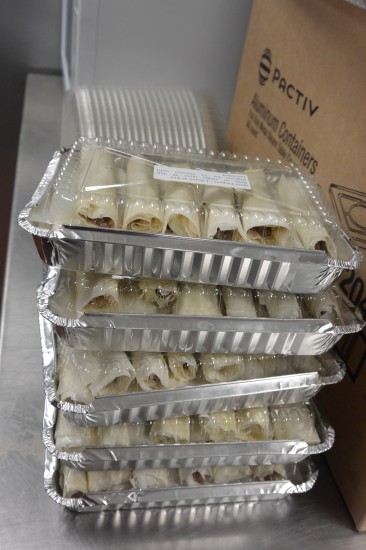
Besides, they like to get together and cook. “We are a small community and enjoy doing this,” says Carolyn Ganim.
Christine Bezreh of Needham is setting up an assembly line, directing helpers who stand at a stainless-steel counter cutting two sheets of phyllo dough into strips, and brushing them with melted butter. They layer the strips, place the lamb mixture — called hushweh — at one end, and roll them up, cigar-style, then set the fingers on large baking sheets.
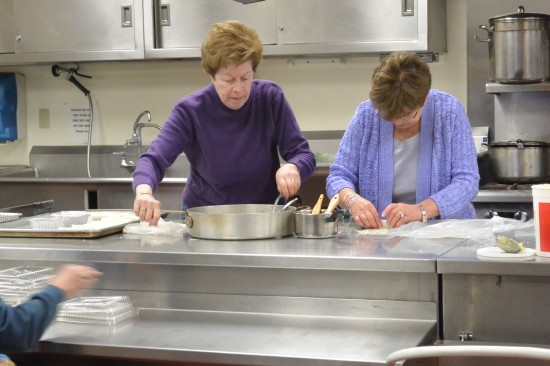
There is a lot of good-natured ribbing among the women, who have been cooking together for decades. Bezreh reminds them that they asked her to be in charge. “I told them they’d be sorry,” she says.
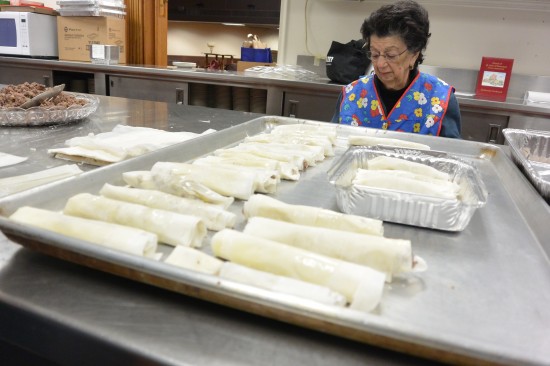
The ground lamb is simmered with an aromatic blend called Syrian pepper, which includes allspice, black pepper, nutmeg, cloves, and cinnamon. The spices give the lamb, and everything it goes into, a distinctive, warm scent. “We put this on everything,” says Ganim.
Bezreh is also preparing two other dishes with hushweh. One is made with chicken; in the other, sheikh al mahshi (“fit for a king”), she uses the meat mixture to stuff eggplant. She buys her lamb at the Cedar Market, a Middle Eastern shop in Norwood, and insists that the meat is coarsely ground.
The chicken dish, often served after church on Sunday, begins with a whole boiled chicken, which is cut up and served over long-grain white rice laced with the seasoned lamb. The dish is monochromatic until Bezreh begins to scatter first pomegranate seeds, then parsley, then pine nuts generously over the entire surface. Gloria Sabbag of Westwood says that her mother, Rita Khouri, who was born in Damascus, “never served a dish to company without first decorating it with pine nuts, pomegranate seeds, and parsley. Never.”
To make the eggplant, which is topped with an intensely red tomato puree, the lamb is sauteed with onions and pine nuts, sandwiched between fried rounds, and baked in a casserole. These and many other specialties are in the “Church of St. John of Damascus Centennial Cookbook,” which the women put together in 2007.
This group and other members gather about three times a year to cook their Middle Eastern specialties. For their annual November bazaar, they start preparing in August.
They try to do everything the way their grandmothers might have. In an e-mail, Bezreh writes, “We made 10,000 [stuffed] grape leaves for last year’s bazaar. Grape leaves are picked in late June when they are at their most tender. We make an all-out appeal to the parish to pick their grape leaves for the bazaar. Many Middle Eastern people have grapevines in their backyards. We made about 250 pounds of kibbee [bulgur wheat and ground lamb], 1,200 meat pies, plus thousands of cookies and pastries.”
It takes a village.
RECIPES
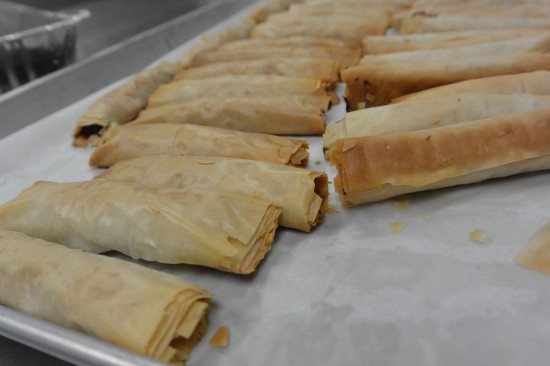
Meat Fingers (Assabee)
Makes about 20
Butter (for the pan)
1 tablespoon butter
1 pound coarse ground lamb or beef
1 medium onion, chopped
¼ cup pine nuts
1 teaspoon salt
2 teaspoons Syrian pepper or 1 teaspoon ground allspice
¼ teaspoon black pepper
½ pound phyllo dough (No. 4 thickness)
1 cup (2 sticks) butter, melted and cool but still liquid
1. Set the oven at 375 degrees. Lightly butter a large rimmed baking sheet.
2. In a large skillet over medium-high heat, melt the butter. Add the lamb or beef and onion, pine nuts, salt, and Syrian pepper or allspice, and black pepper. Cook, breaking up any large clumps of meat. When the mixture is browned, use a slotted spoon to transfer the meat to a bowl; cool.
3. Cut the dough horizontally into thirds, making three 4-inch strips. Cover with plastic wrap or a damp towel. Take 1 strip and brush lightly with butter. Lay another strip on top and brush with butter. Place about 2 tablespoons of the meat mixture at the end of the strip closest to you, but not completely to the edge. Roll up tightly. With your fingers, press the ends together so the meat will not fall out. Place seams down and brush the top of the roll with butter. Repeat with remaining phyllo dough and meat.
4. Bake the rolls for 25 minutes, or until they are golden brown.
Adapted from the “Church of St. John of Damascus Centennial Cookbook”
Chicken with ground lamb and rice
Serves 6
“In most Syrian- and Lebanese-American households in the early 20th century, Sunday dinner consisted of kibbeh, the dish of bulgur and ground meat, stuffed grape leaves, and chicken and rice, made with a boiled chicken,” Christine Bezreh of Needham writes in an e-mail. “The men played backgammon and smoked a water pipe, the women bustled around the kitchen, the children played.” The dish is re-created here with a rotisserie chicken, which Bezreh recommends as a shortcut for busy families.
1 tablespoon butter
1 pound ground lamb or beef
½ cup pine nuts
1 teaspoon salt, or more to taste
2 teaspoons Syrian pepper or 1 teaspoon allspice
½ teaspoon ground black pepper
2 cups long-grain white rice, rinsed and drained
4 cups chicken stock
1 cooked rotisserie chicken (3 to 3½ pounds), bones discarded, meat cut into 2-inch pieces
½ cup slivered almonds
3 tablespoons chopped fresh parsley
3 tablespoons pomegranate seeds
1. In a large flameproof casserole, melt the butter. Add the meat with ¼ cup of the pine nuts, salt, Syrian pepper or allspice, and black pepper. When the mixture is browned, tip the pan and spoon out the excess fat.
2. Add the rice and stock to the mixture and stir thoroughly. Bring to a boil, lower the heat, and cover the pan. Simmer for 12 minutes. Add the chicken pieces to the pot, recover the pan, and continue simmering for 6 minutes, or until rice is tender and has absorbed the broth. Remove from the heat.
3. Set aside for 10 minutes.
4. In a dry skillet, brown the remaining ¼ cup pine nuts and almonds, shaking the pan constantly, until they are aromatic and golden.
5. Sprinkle the chicken with nuts, parsley, and pomegranate seeds.
Adapted from the “Church of St. John of Damascus Centennial Cookbook”

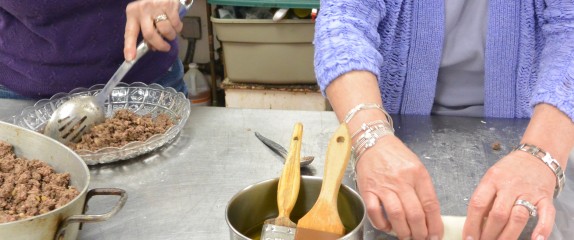

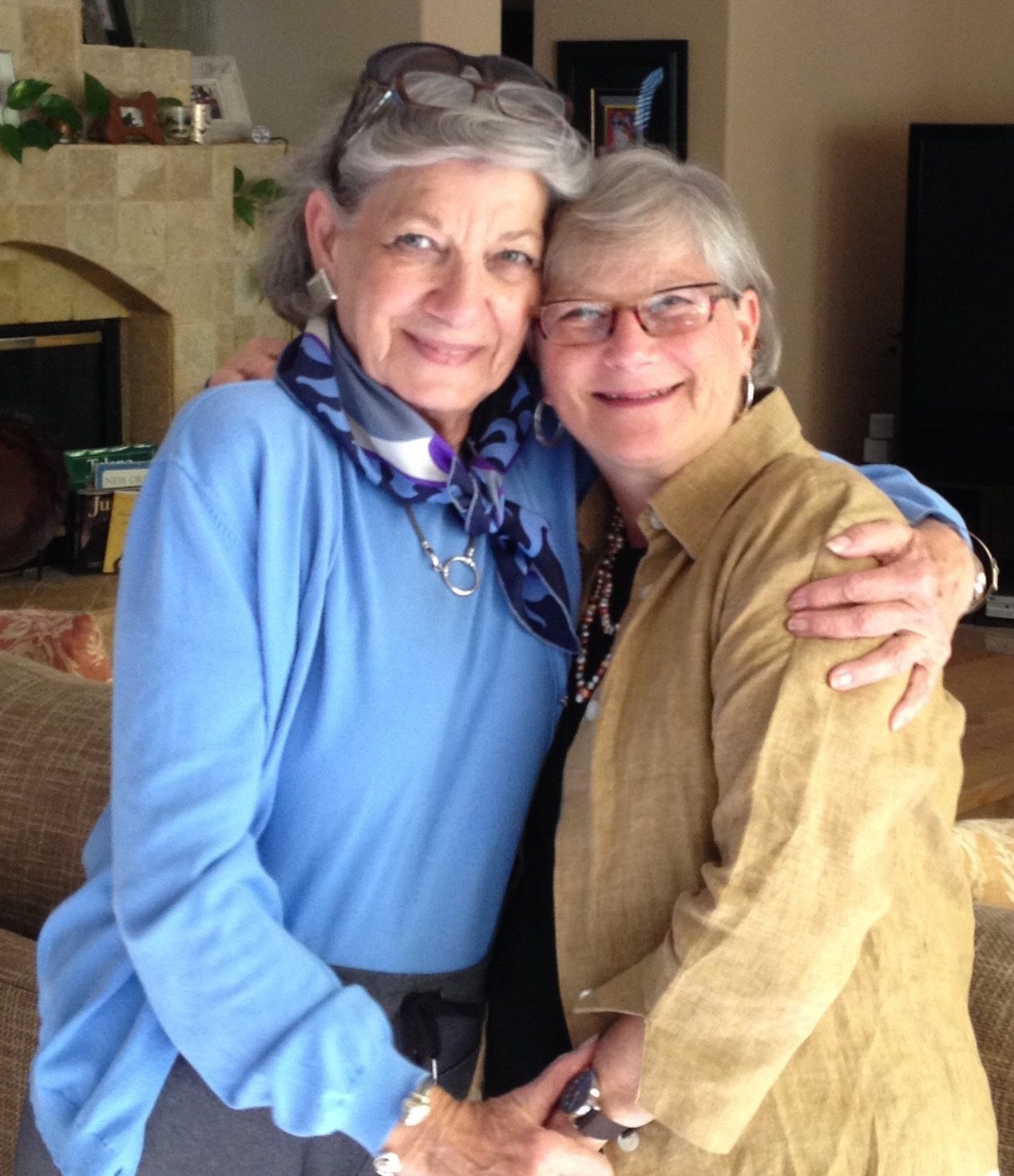








 Debra Samuels, bestselling author, food writer and cooking instructor,
Debra Samuels, bestselling author, food writer and cooking instructor,